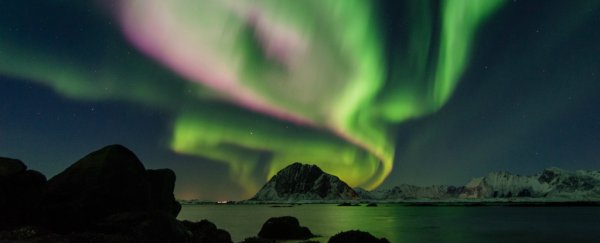Thanks to an outburst from the sun on Labor Day, northern US states may be in for a light show late Wednesday night into early Thursday morning.
On Monday, the surface of the sun erupted into a small solar flare and burped out a cloud of high-energy particles. This particle cloud, called a coronal mass ejection, is travelling at about 200 miles (322 km) per second and should arrive at Earth on Wednesday night.
When it does, those particles will encounter our planet's magnetic field, get shuttled toward the North and South Poles, slam into atmospheric gases, and trigger an unusually south-reaching Aurora Borealis or Northern Lights.
NOAA's Space Weather Prediction Center is keeping tabs on the situation because it could distort Earth's magnetic field enough to trigger a strong or "G3" geomagnetic storm.
Luckily, this event shouldn't be powerful enough to trigger a sever or extreme geomagnetic storm an event that can damage satellites and power grids on Earth.
Below is an animation released by NOAA on Tuesday that shows an experimental forecast for the northern hemisphere.
Typically only people who live in the darkest reaches of the world (far north or south) get to enjoy such light shows.
However, the map suggests the aurora's visible region could reach south into northeast Montana, North Dakota, northeast South Dakota, Minnesota, Wisconsin, Michigan, New York, Connecticut, Rhode Island, Massachusetts, New Hampshire, Vermont, and Maine.
Auroras are best viewed in extremely dark skies away from light pollution after your eyes adjust to total darkness for 10 minutes or longer. Even then, they're pretty hard to see (though cameras set on a slow exposure setting may capture the ghostly glow).
Wednesday's aurora may be difficult to see because a bright moon will rise at the start of the evening for the northern US states and set in the morning, potentially overpowering the dim aurora.
If you step outside and can't see nature's famous nighttime light show, however, you can always go inside and watch a stunning video of auroras dancing from space.
This article was originally published by Business Insider.
More from Business Insider:
